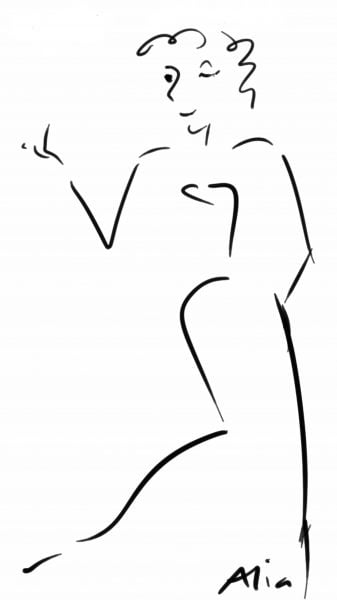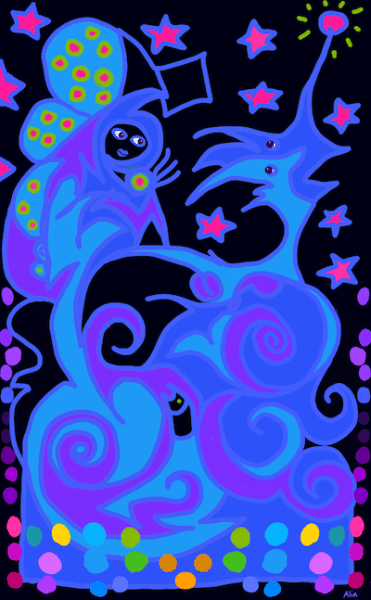One of our persistent fears about improvisation is that if we don’t do every move we ever learned, we will bore our guests.
At the same time, folks talk abut famous Egyptian dancers who do maybe 4 moves their whole set, yet are mesmerizing.
Um. This is what we call a conundrum ; ). Two things that just don’t go together.
So here’s the explanation.
Moves are like boxes.
What’s important is what’s inside them. The more engaged a dancer is—the more they have something to say, some gift they put inside the box—the more engaging they are to watch.
You can do the same little hip circle 10 times in a row—and slowly—as long as you serve it with a heaping helping of personality, playfulness, and joy.
Seriously.
Here’s something to play with.
Restrict yourself to ONE move. It can be a move—like an undulation or a hip drop—or it can be a shape—like a circle or an infinity. Bonus points for one specific move, like a hip infinity or a chest shimmy.
Do that move. For a whole song. (Or at least for a whole minute).
BUT here’s the thing.
In Oriental dance, we have what is called micromovement.
This is the infinite variation of any move in size, speed, force, direction, height, decoration, etc, etc., the better to match the movement to the music.
Say you do hip drops. You can do them little, big, slow, fast, front, back, side, heavy, light, with a shimmy, with little curlicues—and everything in between, and so on, and so on, and so on.
My favorite music for One Move is Bil Afrah
https://www.youtube.com/watch?v=od-WD3TsvkI
If you prefer, here is a 10-min oud taqsim from Munir Bashir.
youtube.com/watch?v=SwlooEGyWkQ
Please remember
1. You do not have to shimmy for the oud (or the qanun). You can do lyrical movement over the percussive quality—which also means you can move slowly and lusciously even to fast music.
2. Enjoy your own movement–take pleasure in the interaction of your body and the music.
3. During the pauses, let your movement fall away along with the sound. If there is no music, there is no movement.
4. Your goal, always, is to let the qualities, the timbres, the feeling you get from the music, color both the texture of your movement, and your affect–expression, energy, bodyline, etc. This is part of musicality.
(Our 5-week musicality class started Tuesday–but you can still get the Week 1 recording–and then join the rest of the series live or by recording.
Info is here: https://aliathabit.com/shop/#live
If you’d rather something at your own pace, you might like Embodiment…)
Let me know how it goes!
Love,
Alia
PS Just because who can resist? Here is the RZA’s new EP, Guided Explorations






No comment yet, add your voice below!